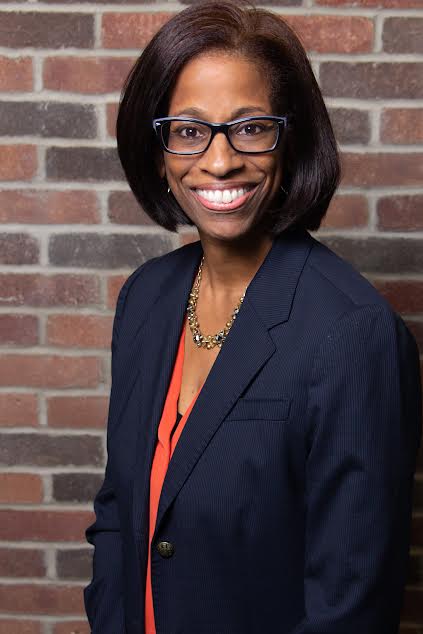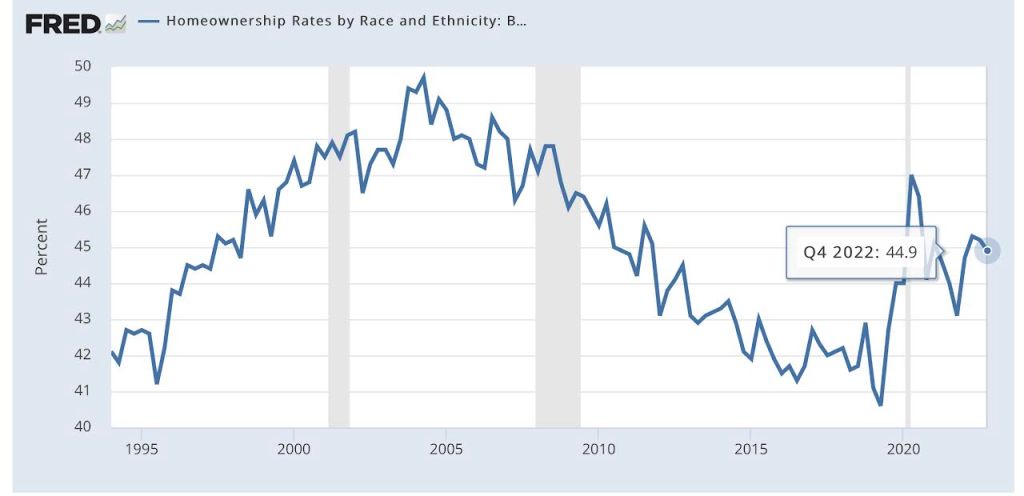“With segregation, with the isolation of the injured and the robbed, comes the concentration of disadvantage. An unsegregated America might see poverty, and all its effects, spread across the country with no particular bias toward skin color. Instead, the concentration of poverty has been paired with a concentration of melanin.” – Ta-Nehisi Coates

HBCUs and PBIs are arguably African American institutions that are built to solve and protect African American interests. There is no greater crisis that currently faces African American economically than its poverty. Its impact across all statistics like health outcomes, civic participation, business creation, student loan debt, and the list goes on and on. What exactly HBCUs and PBIs are doing about African American poverty in their cities and states is complicated to address. Many would say that simply graduating the number of African Americans with degrees is more than enough. That is until you realize the depth and impact our counterparts are using their higher educational institutions to do. MIT has an incubator that allows students to create companies while matriculating. Schools like Stanford have helped create Google, Harvard is the birthplace of Facebook, University of Texas and Texas A&M formed UTIMCO to create the nation’s largest endowment, and much more. PWIs banking with banks like J.P. Morgan, Wells Fargo, and others ensuring that European American owned banks have a deposit base that allows them to conduct the business of financially protecting their community and lending for European American homeownership and small business creation. HBCUs, not so much. It is also not just the HBCUs, but HBCU foundations, HBCU alumni associations, and other organizations that are supposed to be part of the vanguard/ecosystem of African American institutional development that pulls African American individuals, families, and communities away from poverty in conjunction with other African American institutions.
Poverty is already a complex and layered system and African American poverty is that on steroids. Each state and the HBCU/PBIs institutional system in it are part of the counterattack against African American poverty. Or at least we want them to be. For the alumni and administrations who see their institutional system as part of the empowerment and pulling of African America out of the throws of poverty it requires to know the actual depths of the situation.
Among the U.S. states with the highest poverty rates for 2022, HBCU/PBI states constituted 8 out of the top 10 for overall poverty.
ALABAMA
Overall Poverty (2020): 15.5%
Overall Poverty (2015): 19.3%
African American Poverty (2020): 23.5%
African American Poverty (2015): 31.1%
Change In African American Poverty 2015-2020: Decreased 24.4%
ARKANSAS
Overall Poverty (2020): 16.2%
Overall Poverty (2015): 18.9%
African American Poverty (2020): 27.1%*
African American Poverty (2015): 33.2%*
Change In African American Poverty 2015-2020: Decreased 18.4%
CALIFORNIA
Overall Poverty (2020): 11.8%
Overall Poverty (2015): 16.5%
African American Poverty (2020): 19.0%*
African American Poverty (2015): 25.4%*
Change In African American Poverty 2015-2020: Decreased 25.2%
DELAWARE
Overall Poverty (2020): 11.3%
Overall Poverty (2015): 12.5%
African American Poverty (2020): 17.3%
African American Poverty (2015): 19.9%
Change In African American Poverty 2015-2020: Decreased 13.1%
DISTRICT OF COLUMBIA
Overall Poverty (2020): 13.5%
Overall Poverty (2015): 17.7%
African American Poverty (2020): 21.6%*
African American Poverty (2015): 25.9%*
Change In African American Poverty 2015-2020: Decreased 16.6%
FLORIDA
Overall Poverty (2020): 12.7%
Overall Poverty (2015): 16.5%
African American Poverty (2020): 19.8%*
African American Poverty (2015): 26.9%*
Change In African American Poverty 2015-2020: Decreased 26.4%
GEORGIA
Overall Poverty (2020): 13.3%
Overall Poverty (2015): 18.3%
African American Poverty (2020): 18.8%
African American Poverty (2015): 27.0%
Change In African American Poverty 2015-2020: Decreased 30.1%
ILLINOIS
Overall Poverty (2020): 11.5%
Overall Poverty (2015): 14.4%
African American Poverty (2020): 24.2%*
African American Poverty (2015): 30.6%*
Change In African American Poverty 2015-2020: Decreased 20.9%
KENTUCKY
Overall Poverty (2020): 16.3%
Overall Poverty (2015): 19.1%
African American Poverty (2020): 24.4%*
African American Poverty (2015): 32.4%
Change In African American Poverty 2015-2020: Decreased 24.7%
LOUISIANA
Overall Poverty (2020): 19.0%
Overall Poverty (2015): 19.8%
African American Poverty (2020): 29.4%*
African American Poverty (2015): 33.7%*
Change In African American Poverty 2015-2020: Decreased 12.8%
MARYLAND
Overall Poverty (2020): 9.0%
Overall Poverty (2015): 10.1%
African American Poverty (2020): 12.9%
African American Poverty (2015): 14.6%*
Change In African American Poverty 2015-2020: Decreased 11.6%
MASSACHUSETTS
Overall Poverty (2020): 9.4%
Overall Poverty (2015): 11.6%
African American Poverty (2020): 17.6%
African American Poverty (2015): 21.8%
Change In African American Poverty 2015-2020: Decreased 19.3%
MICHIGAN
Overall Poverty (2020): 13.0%
Overall Poverty (2015): 16.2%
African American Poverty (2020): 25.9%*
African American Poverty (2015): 33.0%*
Change In African American Poverty 2015-2020: Decreased 21.5%
MISSISSIPPI
Overall Poverty (2020): 19.6%
Overall Poverty (2015): 21.5%
African American Poverty (2020): 30.7%
African American Poverty (2015): 34.3%*
Change In African American Poverty 2015-2020: Decreased 10.5%
MISSOURI
Overall Poverty (2020): 12.9%
Overall Poverty (2015): 15.5%
African American Poverty (2020): 21.2%
African American Poverty (2015): 28.1%*
Change In African American Poverty 2015-2020: Decreased 24.6%
NEW YORK
Overall Poverty (2020): 13.0%
Overall Poverty (2015): 15.9%
African American Poverty (2020): 20.0%
African American Poverty (2015): 23.2%
Change In African American Poverty 2015-2020: Decreased 13.8%
NORTH CAROLINA
Overall Poverty (2020): 13.6%
Overall Poverty (2015): 17.2%
African American Poverty (2020): 21.5%
African American Poverty (2015): 26.5%
Change In African American Poverty 2015-2020: Decreased 18.9%
OHIO
Overall Poverty (2020): 13.1%
Overall Poverty (2015): 15.8%
African American Poverty (2020): 27.3%*
African American Poverty (2015): 34.7%*
Change In African American Poverty 2015-2020: Decreased 21.3%
OKLAHOMA
Overall Poverty (2020): 15.2%
Overall Poverty (2015): 16.6%
African American Poverty (2020): 28.2%*
African American Poverty (2015): 29.9%*
Change In African American Poverty 2015-2020: Decreased 5.7%
PENNSYLVANIA
Overall Poverty (2020): 12.0%
Overall Poverty (2015): 13.6%
African American Poverty (2020): 24.9%
African American Poverty (2015): 29.5%
Change In African American Poverty 2015-2020: Decreased 15.6%
SOUTH CAROLINA
Overall Poverty (2020): 13.8%
Overall Poverty (2015): 16.8%
African American Poverty (2020): 23.1%*
African American Poverty (2015): 26.0%
Change In African American Poverty 2015-2020: Decreased 11.2%
TENNESSEE
Overall Poverty (2020): 13.9%
Overall Poverty (2015): 18.3%
African American Poverty (2020): 21.5%
African American Poverty (2015): 30.9%
Change In African American Poverty 2015-2020: Decreased 30.4%
TEXAS
Overall Poverty (2020): 13.6%
Overall Poverty (2015): 17.2%
African American Poverty (2020): 18.6%
African American Poverty (2015): 23.2%
Change In African American Poverty 2015-2020: Decreased 19.8%
VIRGINIA
Overall Poverty (2020): 9.9%
Overall Poverty (2015): 11.8%
African American Poverty (2020): 16.4%*
African American Poverty (2015): 21.2%*
Change In African American Poverty 2015-2020: Decreased 22.6%
*Denotes that African Americans had the highest poverty rate among all groups during that period.
SOURCE: TalkPoverty.org; KFF.org





